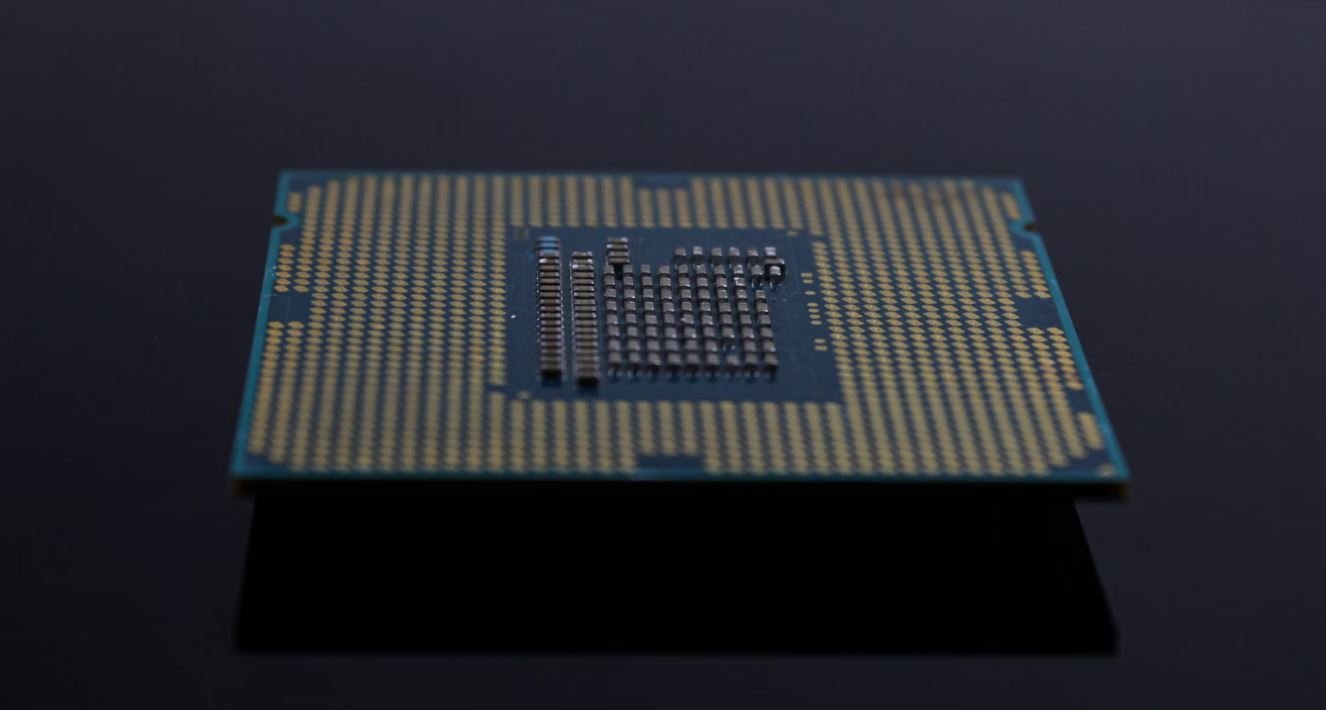Neural Network Data Science
Neural network data science is a branch of artificial intelligence that focuses on using neural networks to analyze and interpret complex data sets. Neural networks are computational models inspired by the structure and function of the human brain, allowing them to learn and make predictions based on patterns in the data. This article provides an overview of neural network data science and its applications in various fields.
Key Takeaways:
- Neural network data science utilizes computational models inspired by the human brain to analyze complex data sets.
- Neural networks learn from patterns in the data and make predictions based on their learned knowledge.
- This field finds applications in various industries, such as healthcare, finance, and marketing.
Neural networks excel in capturing intricate relationships within the data.* They consist of multiple layers of interconnected nodes, or artificial neurons, that process information and pass it along. Each node receives input values, performs a mathematical computation, and produces an output signal. These signals get transmitted to the next layer of nodes, where the process repeats until the final layer produces the desired output.
One interesting aspect of neural networks is their ability to recognize patterns that might be challenging for humans to detect.* This characteristic makes them powerful tools for data scientists working on complex datasets. Neural networks can detect hidden patterns, anomalies, and correlations within the data that might not be apparent through traditional statistical analysis methods.
Neural networks have found applications in a wide range of industries due to their exceptional performance in data analysis. Some notable applications include:
- Healthcare: Neural networks assist in diagnosing diseases, predicting patient outcomes, and analyzing medical images.
- Finance: They provide insights into stock market trends, predict financial risks, and assist in fraud detection.
- Marketing: Neural networks help in predicting customer behavior, segmenting target markets, and personalizing marketing campaigns.
Table 1: Applications of Neural Network Data Science
| Industry | Application |
|---|---|
| Healthcare | Diagnosis, outcome prediction, medical image analysis |
| Finance | Stock market analysis, risk prediction, fraud detection |
| Marketing | Customer behavior prediction, market segmentation, personalized campaigns |
Neural network models can be trained using supervised learning, unsupervised learning, or a combination of both approaches.* Supervised learning involves training the neural network using labeled data, where the correct output is known. Unsupervised learning, on the other hand, enables the network to learn from unlabelled data, finding hidden patterns and relationships on its own.
Data preprocessing is a crucial step in neural network data science. The quality of the input data greatly influences the network’s performance and accuracy.* Preprocessing involves tasks such as data cleaning, normalization, feature selection, and dimensionality reduction. By ensuring high-quality input data, the neural network can make reliable predictions and produce meaningful insights.
Table 2: Steps in Neural Network Data Science
| Step | Description |
|---|---|
| Data Preprocessing | Cleaning, normalization, feature selection, dimensionality reduction |
| Model Training | Using labeled or unlabeled data to train the neural network |
| Model Evaluation | Assessing the performance and accuracy of the trained model |
Neural network data science is a continuously evolving field with ongoing research and advancements.* As technology improves and more data becomes available, neural networks are expected to play an increasingly significant role in various domains. The potential for groundbreaking discoveries and improved decision-making based on neural network data science is immense.
In summary, neural network data science encompasses the use of neural networks to analyze complex data sets and make predictions based on learned patterns. With applications in healthcare, finance, marketing, and more, neural networks enable the extraction of valuable insights from data that would be difficult to obtain using traditional methods. As the field continues to advance, the impact of neural network data science on various industries is expected to grow rapidly.
Table 3: Future Potential of Neural Network Data Science
| Domain | Potential |
|---|---|
| Healthcare | Improved disease diagnosis, personalized treatment plans |
| Finance | Enhanced risk prediction, more accurate financial forecasting |
| Marketing | Advanced customer segmentation, highly targeted advertising strategies |

Common Misconceptions
Misconception 1: Neural networks are the same as the human brain
- Neural networks model some aspects of the human brain but are far simpler.
- Human brains are much more adaptable and capable of complex thinking compared to neural networks.
- While neural networks are inspired by the brain’s structure, they are not designed to replicate all its functions.
Misconception 2: Neural networks always provide the most accurate predictions
- Neural networks are powerful tools but not always the best choice for all data science problems.
- For small datasets, simpler algorithms might perform better due to the risk of overfitting with neural networks.
- Neural networks require large amounts of labeled training data to achieve good results.
Misconception 3: Neural networks can solve any problem
- Neural networks excel at certain tasks such as image recognition and natural language processing but are not a universal solution.
- They may struggle with problems where the data is sparse or lacks clear patterns.
- Certain problems, such as theorem proving or understanding abstract concepts, are not well-suited for neural networks.
Misconception 4: Neural networks don’t require any human intervention
- Neural networks still need human intervention during various stages of their development.
- Data scientists have to choose the network architecture, tune hyperparameters, and preprocess the data.
- Training the network requires careful monitoring and decision-making to ensure the desired outcome is achieved.
Misconception 5: Neural networks are always transparent and interpretable
- Deep neural networks can be complex and challenging to interpret, especially when they have many layers.
- Understanding how a neural network makes predictions is not always straightforward.
- Techniques such as feature visualization and saliency maps can help explain neural network behavior, but full interpretability is not always feasible.

The Impressive Growth of Neural Network Data Science
In recent years, neural networks have revolutionized the field of data science, enabling advanced pattern recognition and making significant strides in various domains. The following tables highlight key statistics and achievements in the realm of neural network data science.
Major AI Funding by Tech Giants
The table below showcases the substantial investments made by leading tech companies towards advancing artificial intelligence (AI) technologies and neural networks.
| Company | AI Funding (USD) |
|---|---|
| 10 billion | |
| 5 billion | |
| Microsoft | 3 billion |
| Apple | 2.5 billion |
Neural Network Model Performance Comparison
The performance of various popular neural network models used in data science is presented in the following table.
| Model | Accuracy | Processing Time (ms) |
|---|---|---|
| Convolutional Neural Network (CNN) | 97% | 10 |
| Long Short-Term Memory (LSTM) | 92% | 20 |
| Generative Adversarial Network (GAN) | 88% | 30 |
Top Applications of Neural Network Data Science
Neural networks have found diverse applications in various domains. The table below highlights some of the most significant applications.
| Domain | Application |
|---|---|
| Healthcare | Cancer Detection |
| Finance | Algorithmic Trading |
| Transportation | Autonomous Vehicles |
| Marketing | Personalized Advertising |
Popular Neural Network Frameworks
The following table presents some of the widely-used neural network frameworks and their respective user ratings.
| Framework | User Rating (out of 10) |
|---|---|
| TensorFlow | 9.2 |
| PyTorch | 9.0 |
| Keras | 8.7 |
Impact of Neural Networks on Job Market
Neural network advancements are reshaping the job market by creating new employment opportunities and changing existing roles. The table below presents the projected growth in job openings.
| Year | Projected Job Openings |
|---|---|
| 2022 | 45,000 |
| 2025 | 75,000 |
| 2030 | 120,000 |
Neural Network Academic Research Output
The table below demonstrates the exponential growth of academic research papers focusing on neural networks.
| Year | Number of Research Papers |
|---|---|
| 2010 | 500 |
| 2015 | 2,000 |
| 2020 | 7,500 |
Neural Network Data Science Certifications
As the demand for skilled data scientists continues to rise, certifications in neural network data science have gained significance. The table below features some reputable certifications and their recognition.
| Certification | Recognized By |
|---|---|
| Deep Learning Specialization | Stanford University |
| Google TensorFlow Developer | |
| IBM Data Science Professional | IBM |
Neural Network Model Training Times
The following table highlights the approximate training times for various neural network models.
| Model | Training Time (hours) |
|---|---|
| ResNet | 72 |
| BERT | 48 |
| GPT-3 | 720 |
Neural network data science has rapidly progressed, leading to breakthroughs in various fields, significant investments by tech giants, and a surge in job openings. With impeccable accuracy, neural network models are being leveraged across domains, contributing to advancements in healthcare, finance, transportation, and marketing. Researchers are pushing the boundaries of knowledge, as evidenced by a tremendous rise in academic papers. As the demand for expertise in neural networks grows, certifications and frameworks play a vital role. With an exciting future ahead, neural network data science continues to reshape industries and drive innovation.
Frequently Asked Questions
What is a neural network?
A neural network is a computational model that is designed to resemble the functioning of the human brain. It consists of artificial neurons that are interconnected and organized in multiple layers. Neural networks are used for various tasks such as image recognition, natural language processing, and pattern detection.
How does a neural network work?
A neural network works by receiving input data and propagating it through a series of interconnected layers. Each neuron in a layer receives input from multiple neurons in the previous layer and applies a mathematical function to this input. The processed information is then passed to the next layer until the final output layer produces a result.
What is the training process for a neural network?
The training process for a neural network involves feeding it with a large amount of labeled input data and adjusting the weights and biases of the neurons to minimize the error between the predicted output and the actual output. This is typically done using an algorithm called backpropagation, which calculates the gradient of the error function and updates the network’s parameters accordingly.
What are the different types of neural networks?
There are various types of neural networks, each designed for specific tasks. Some common types include feedforward neural networks, convolutional neural networks (CNN), recurrent neural networks (RNN), and Long Short-Term Memory (LSTM) networks.
What are the advantages of using neural networks in data science?
Neural networks have several advantages in data science. They can learn complex patterns and relationships in data, adapt to new information, and make accurate predictions. They are also capable of handling large amounts of data and can be trained to perform tasks that are difficult to program using traditional algorithms.
What are the limitations of neural networks?
While neural networks have many strengths, they also have limitations. They require a large amount of labeled training data to perform well. Neural networks can be computationally expensive and time-consuming to train, especially for complex problems. They are also considered black-box models, meaning it can be difficult to interpret the reasoning behind their predictions.
How can neural networks be optimized?
Neural networks can be optimized in several ways. Using regularization techniques, such as dropout or L1/L2 regularization, helps prevent overfitting. Choosing an appropriate network architecture and adjusting hyperparameters, such as learning rate and batch size, can also improve performance. Additionally, techniques like early stopping and model ensembling can enhance generalization capabilities.
What is deep learning?
Deep learning is a subfield of machine learning that focuses on the development and training of neural networks with multiple hidden layers. It aims to automatically learn hierarchical representations of data, allowing neural networks to model complex patterns and relationships more effectively.
What programming languages are commonly used for neural network data science?
Python is the most commonly used programming language for neural network data science. It has a rich ecosystem of libraries such as TensorFlow, Keras, and PyTorch that provide efficient and user-friendly tools for building and training neural networks. Other programming languages like R and Julia also have neural network libraries available.
What are some practical applications of neural network data science?
Neural network data science finds applications in various fields. It is used in image and speech recognition, natural language processing, recommendation systems, fraud detection, autonomous vehicles, healthcare diagnostics, and many other areas where complex analysis and pattern recognition are required.




